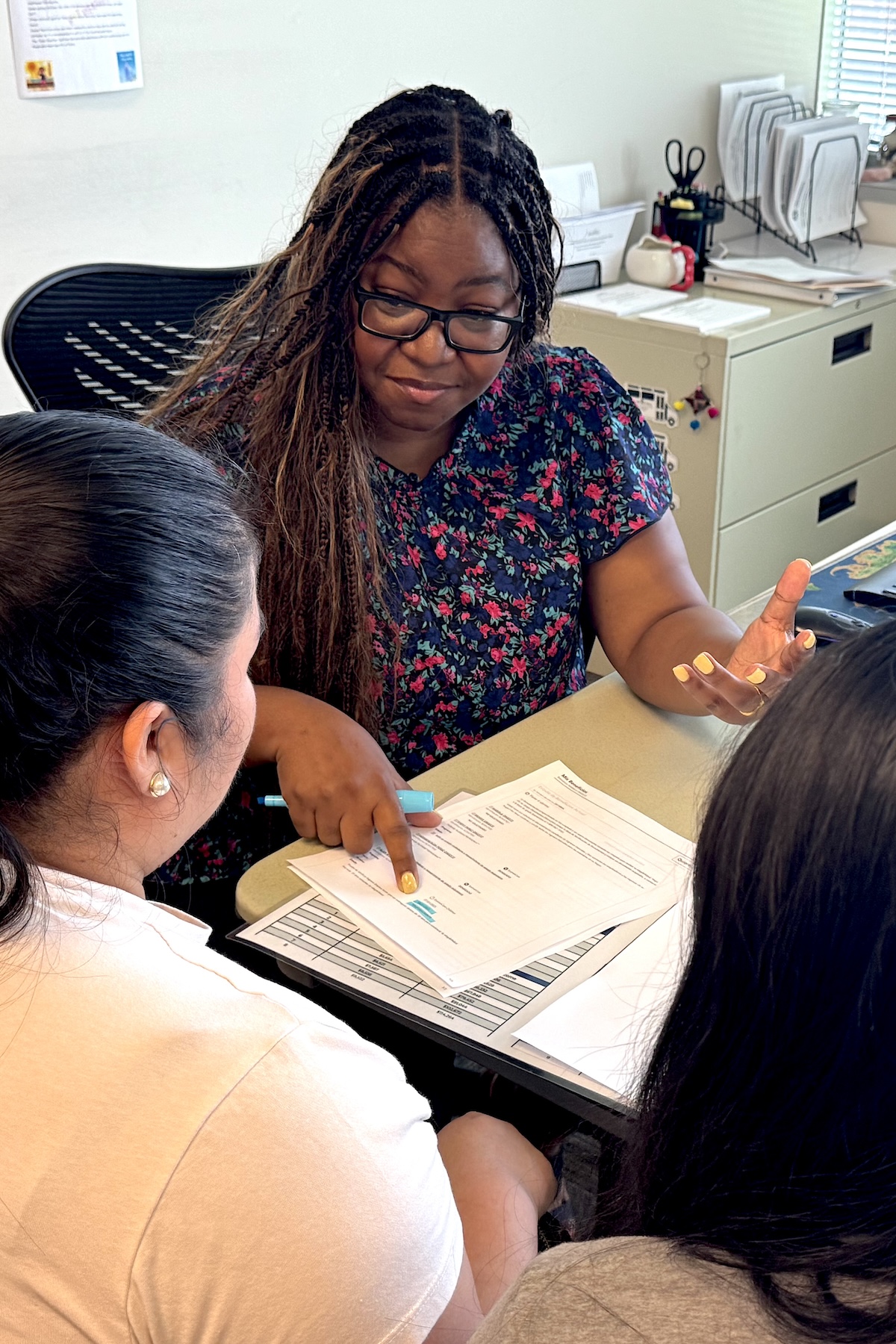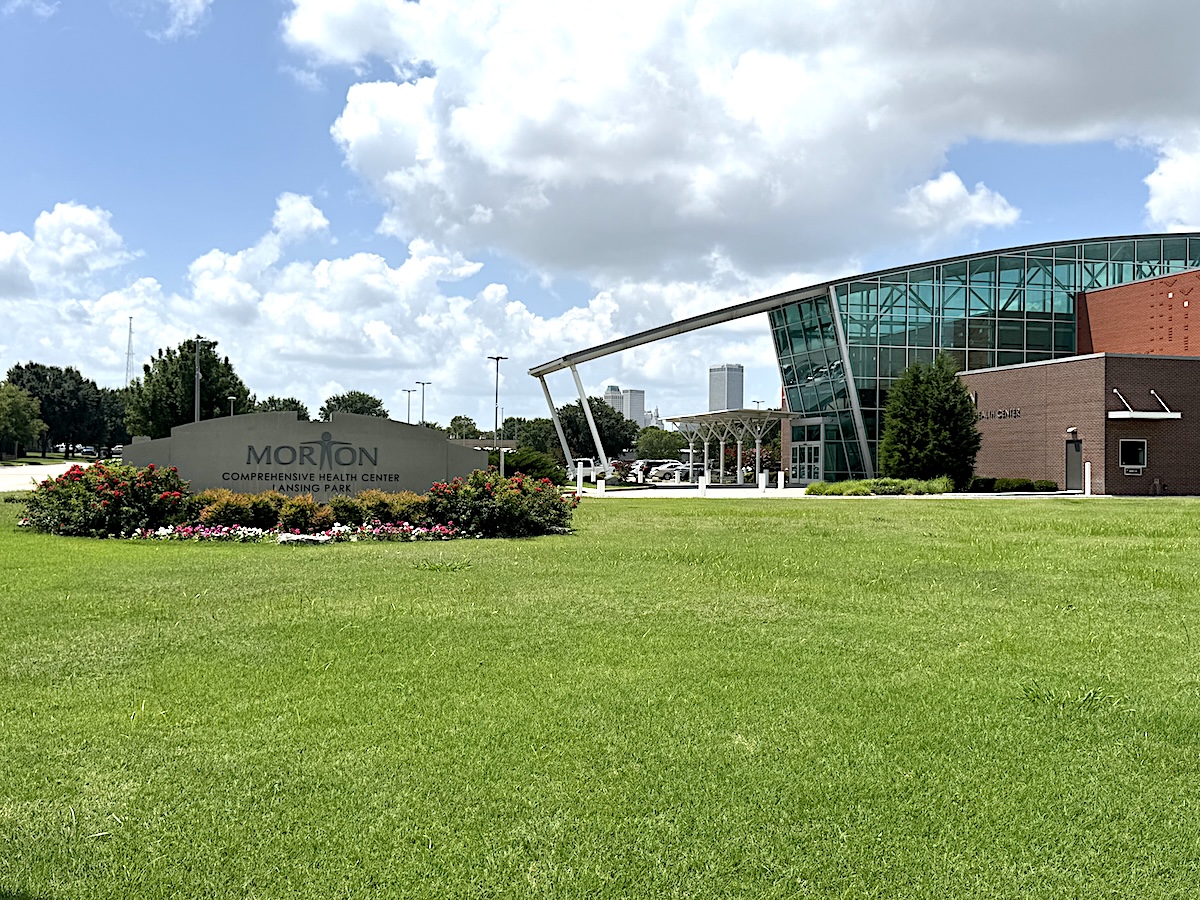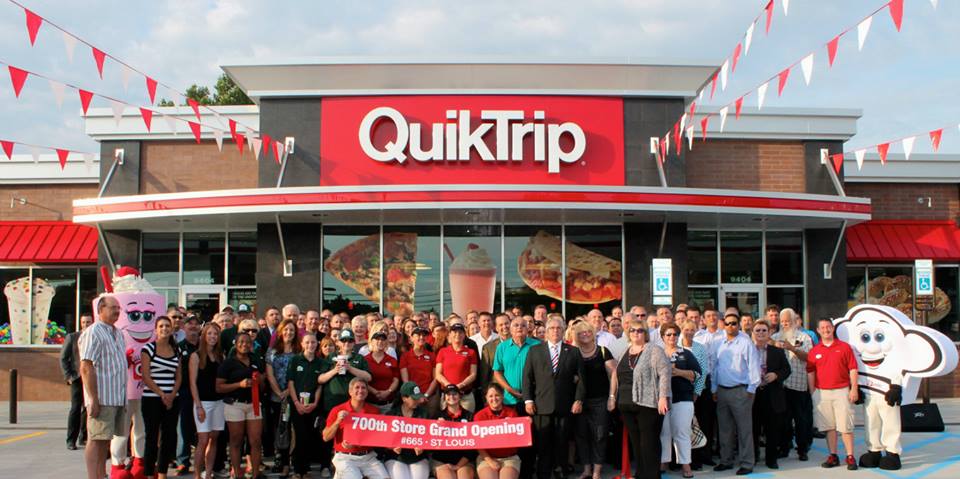
LOCAL
Kimberly Marsh, The Oklahoma Eagle
Phelicia Morton explains the benefits of SoonerCare, Oklahoma’s Medicaid program, to two clients at Morton Comprehensive Health Center on North Lansing Avenue on July 7. New rules for eligibility are included in the recent Trump budget reconciliation bill signed into law July 4. Photo, Provided
SoonerCare and SNAP cuts could introduce greater challenges for Oklahomans
Susan Savage said she was astonished at how fast Congress passed President Trump’s “One Big Beautiful Bill” which features 309 provisions.
Savage is a former public official and CEO for Tulsa’s Morton Comprehensive Health Services which works with patients who depend on both Medicaid through the state’s SoonerCare program and the Affordable Care Act. Morton sees 18,000 “distinct” patients a year accounting for 85,000 visits.
“For the Senate to make the changes they made and for it to receive passage by the House a couple of days later is not anything I’ve ever witnessed before,” Savage told The Oklahoma Eagle.
The bill, which Trump signed on Friday, features bundled tax cuts of $4.5 trillion over 10 years that are mostly offset by Medicaid cuts of $1.7 trillion and approximately $186 billion less for Supplemental Nutritional Assistance Program (SNAP) – the hardest hit programs in the bill.

Work requirements
The new law requires able-bodied adults, ages 18 to 64, to meet a threshold of 80 hours per month of qualifying work, job training, volunteering, or schooling to maintain eligibility for SNAP benefits. It increases the age cap from 54 to 64.
Parents with children ages 14 and older will also be required to meet work participation standards.
For Medicaid, adults ages 19–64 without young dependents must meet work requirements. Parents of dependents who are 14 or younger must meet the requirements as well, though there are exemptions for both programs
Savage said she’s concerned for patients systemwide but the path to implementation isn’t yet clear. The new SoonerCare requirements aren’t set to go into effect until January, 2027.
“I think we will begin to see an increase in the numbers of uninsured because people can’t qualify,” she said. “I want to do the very best job for Morton’s patients and employees, but it is very hard (for me) to know that we are making it more difficult for people who already have incredible challenges..”
Oklahoma could be one of the highest impacted states since nearly one in four Oklahomans rely on SoonerCare. Meanwhile, SNAP serves nearly 700,000 residents in the state.
Shifting costs to states
For the first time, both SNAP and administrative costs will shift to states, despite the lack of any budget appropriated to cover the program costs. Jessica Dietrich, with Hunger Free Oklahoma, says that will be a challenge.
Dietrich said the state would be required to cover as much as $300 million annually. But based on Gov. Kevin Stitt’s anti-tax position, an increase would be an unlikely funding solution.
She warned that if Oklahoma can’t raise the revenue the state government may have to take other actions to reduce the costs of the program by restricting participation further through new requirements.
Dietrich said there is still time to shape the way the bill is implemented.
“Contact your members of Congress and your state legislators. Let them know how these changes will impact you and your family,” she said.
However, based on the timing, most Americans will not feel the impact of Medicaid cuts until after 2026 mid-term elections.










